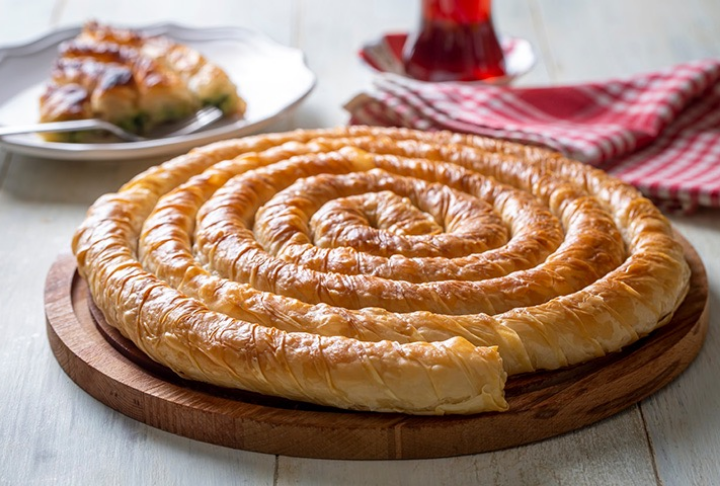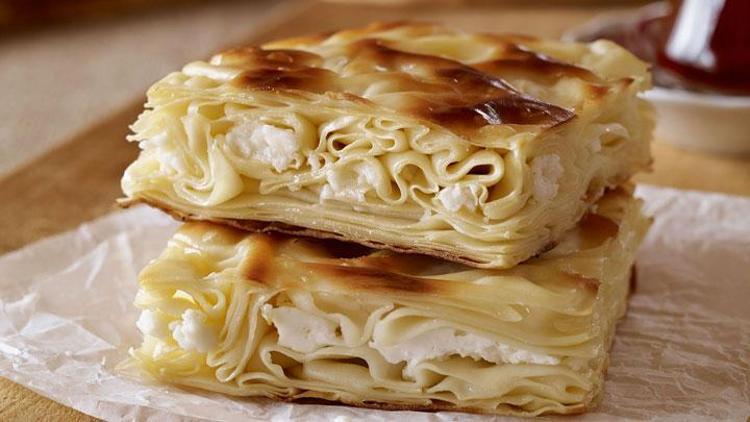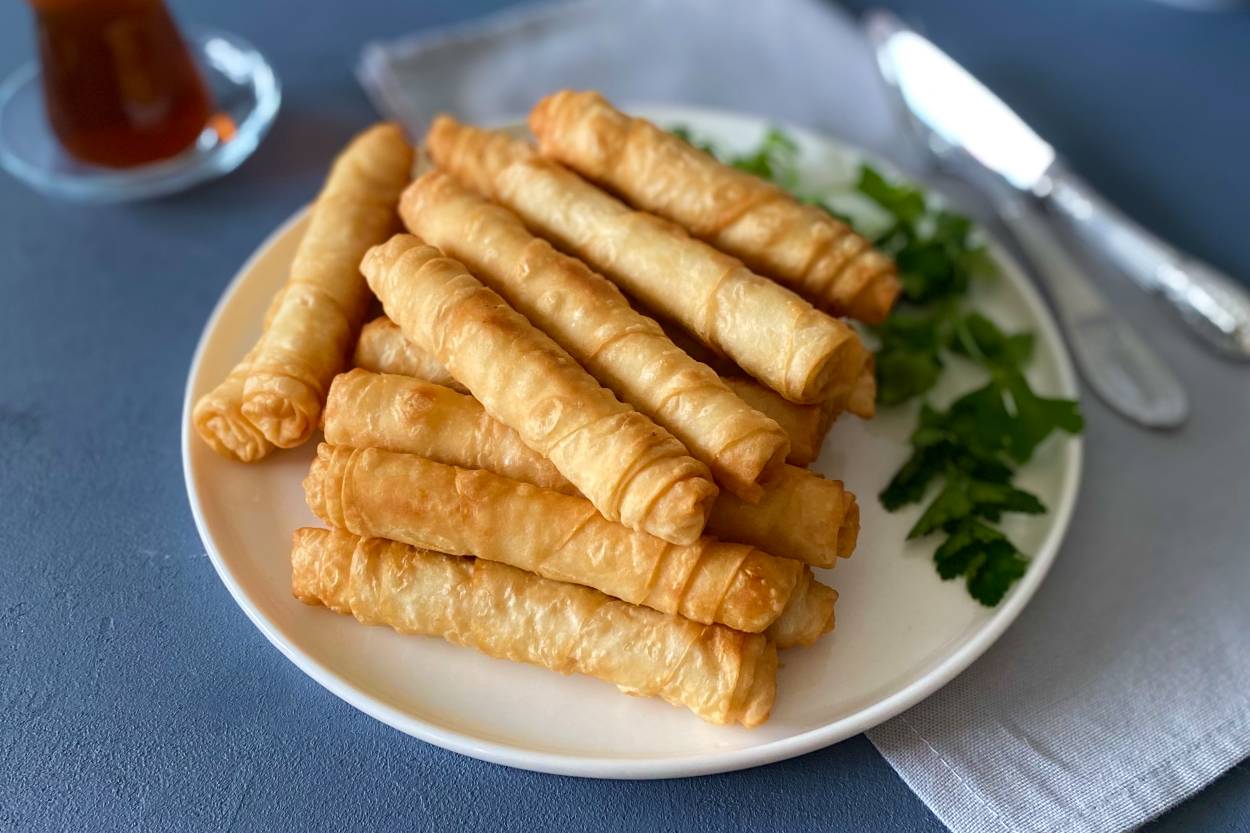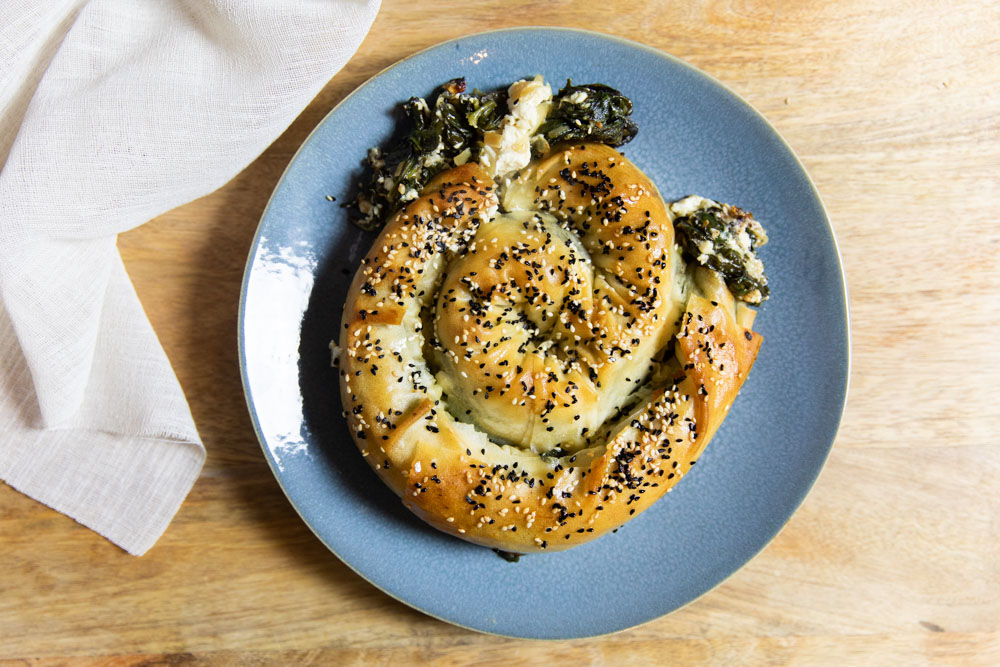The Traditional Pastry from Ottoman Empire - Borek

Borek is a traditional pastry that has its roots in the cuisine of the Ottoman Empire, and it is still popular in many countries that were once part of the empire or influenced by its culinary traditions. The dish has a long and diverse history, and its variations can be found across the Middle East, Balkans, and Central Asia.
Here is a brief history of borek:
- Ottoman Empire Origins:
Börek is believed to have originated in the kitchens of the Ottoman Empire, which spanned from the 14th to the early 20th century. The dish was likely inspired by Central Asian and Middle Eastern cuisines, with the Ottomans adding their own unique twists.
- Spread Across the Empire:
As the Ottoman Empire expanded, börek became a popular dish in regions such as the Balkans, Middle East, and North Africa. Different variations of the pastry emerged, adapting to local ingredients and culinary preferences.
- Diverse Variations:
Börek comes in various forms, with differences in shape, filling, and preparation methods. Some common types include:
- Water pastry: Made with layers of dough boiled in water, often filled with cheese and parsley. It is a type of borek, a traditional Turkish pastry, where the dough is boiled in water before baking. This technique gives the pastry a unique texture. It is typically made by layering thin sheets of dough and filling them with a mixture of cheese, parsley, and sometimes minced meat. The assembled layers are then boiled briefly in water before being baked until golden brown. The result is a delicious and flaky pastry with a distinct texture and flavor. It is enjoyed as a savory dish and is often served at special occasions and gatherings.

- Cigar pastry: Rolled into cigar-like shapes, usually filled with feta cheese and herbs. This Turkish dish is named for its shape, which resembles a cigarette or cigar. Sigara böreği is a type of borek, a traditional pastry, and is characterized by its thin cylindrical form. The pastry is made by rolling thin sheets of dough around a filling, typically composed of feta cheese and parsley, and then frying or baking until golden brown. The filling may vary, and some variations might include ingredients like minced meat, spinach, or other herbs and spices. It is a popular appetizer or snack and is often served at social gatherings, parties, or as part of a meze spread in Turkish cuisine. The name cigarette reflects the rolled and slender appearance of the pastry.

- Spinach pastry: Filled with spinach and often accompanied by cheese and onions. This type of borek, a traditional Turkish pastry, is filled with spinach. The filling typically includes sautéed or cooked spinach mixed with ingredients such as onions, garlic, herbs, and sometimes feta cheese. The mixture is then encased in layers of thin dough, creating a savory and flavorful pastry. It is a popular variation of borek, enjoyed for its combination of flaky pastry and the earthy taste of spinach. It can be shaped in various ways, such as a large layered pie or individual rolls. The dish is commonly served as a main course or as part of a mezze spread in Turkish cuisine.

- Minced meat pastry: Filled with spiced minced meat (usually lamb or beef). This type of börek, a traditional Turkish pastry, is filled with seasoned minced meat. The minced meat is often mixed with onions, garlic, and various herbs and spices to enhance the flavor. The meat mixture is then layered between thin sheets of dough, creating a savory and satisfying pastry. It can be prepared in various shapes and sizes, such as a large rolled cylinder or as individual triangular or rectangular pastries. It is a popular dish in Turkish cuisine and is often enjoyed as a main course. Similar to other types of borek, it may also be served on special occasions, family gatherings, or as part of a meze spread.

- Symbolism and Tradition:
Borek has cultural and symbolic significance in many communities. It is often associated with celebrations, family gatherings, and special occasions. The dish can vary in size, from individual servings to large communal trays.
- Modern Adaptations:
Today, borek continues to be a popular and versatile dish. While traditional recipes persist, modern variations and creative adaptations have emerged, incorporating different fillings and presentation styles.
- Global Presence:
Due to migration and globalization, borek has spread beyond its original regions and gained popularity in various parts of the world. Turkish, Balkan, and Middle Eastern communities, in particular, have contributed to the global popularity of this savory pastry.
Borek remains a beloved dish with a rich history, reflecting the culinary diversity and cultural connections of the regions influenced by the Ottoman Empire.
Spinach and Feta Borek Recipe:
Here's a basic recipe for making a classic Turkish borek with a spinach and feta filling. This recipe will guide you through making the dough from scratch, but you can also use store-bought phyllo dough if you prefer.
Ingredients:
For the Dough:
- 3 cups all-purpose flour
- 1 cup warm water
- 1/4 cup olive oil
- 1 teaspoon salt
For the Filling:
- 500g fresh spinach, washed and chopped
- 200g feta cheese, crumbled
- 1 large onion, finely chopped
- 2 tablespoons olive oil
- 1 teaspoon salt
- 1/2 teaspoon black pepper
- 1/2 teaspoon red pepper flakes (optional)
For Assembly:
- Olive oil for brushing layers
- Sesame seeds or nigella seeds for topping (optional)
Instructions:
1. Make the Dough:
- In a large bowl, combine the flour and salt. Make a well in the center and add the warm water and olive oil.
- Mix until a dough forms. Knead the dough on a floured surface for about 8-10 minutes until smooth.
- Divide the dough into two equal portions, cover them with a damp cloth, and let them rest for at least 30 minutes.
2. Prepare the Filling:
- In a pan, heat olive oil over medium heat. Add chopped onions and sauté until translucent.
- Add chopped spinach to the pan and cook until wilted. Remove from heat and let it cool.
- In a bowl, mix the cooked spinach and onions with crumbled feta, salt, black pepper, and red pepper flakes if using.
3. Roll Out the Dough:
- Preheat your oven to 375°F (190°C).
- Roll out one portion of the dough on a floured surface until very thin. You can use a rolling pin or your hands to stretch it.
4. Assemble the Börek:
- Place the rolled-out dough on a greased baking sheet.
- Brush the surface with olive oil and add a layer of the spinach and feta mixture.
- Repeat the process, layering rolled-out dough and the filling until you run out of both, finishing with a layer of dough on top.
- Tuck the edges in to seal the börek.
5. Bake:
- Brush the top of the börek with olive oil and sprinkle sesame seeds or nigella seeds if desired.
- Bake in the preheated oven for about 35-40 minutes or until golden brown.
6. Serve:
- Allow the börek to cool for a few minutes before slicing. It can be served warm or at room temperature.
Enjoy your homemade spinach and feta börek! Feel free to customize the filling or experiment with different types of börek based on your preferences.
I recommend you to watch some of tasty borek recipes that I share the links below;
1) https://youtu.be/FA_BMw0s7ds?si=gKt71fyqE4lv5WCZ
2) https://youtu.be/LzWEbiAHXEo?si=kTy3xiKDV2sRtEXj
3) https://youtu.be/roy_DgQ5--0?si=iSH0rv6HA1lkLOvU
4) https://youtu.be/zlQ8ONL80v0?si=B6ClcngMsGKhYNBH
5) https://youtu.be/4tPwzbBMD-g?si=z_-oYjl8m3N2Yy37
6) https://youtu.be/KhtkLluTIdk?si=er9YUuXa8YA_E3uf
7) https://youtu.be/Ut8ybKehDrI?si=t6Zys8XLXRks381y
8) https://youtu.be/rmbe-hf7B10?si=VanYXNSMr2E8Xlnz
9) https://youtu.be/-fiiZGpWOT0?si=Frvn10h8P5wTbDoM
10) https://youtu.be/MFCpNlNsFh4?si=lf6xL4iQcyugzH3F









































